(单词翻译:单击)
5.3D Printed Ears
5.3D 打印耳朵
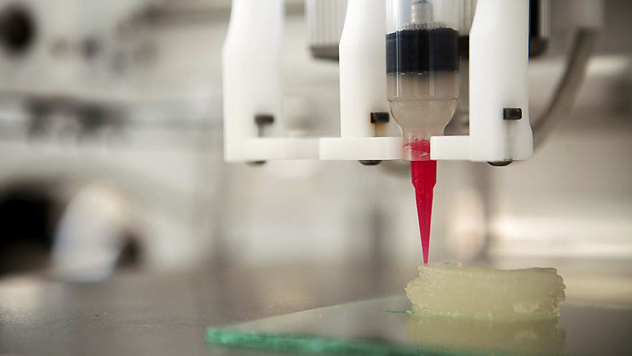
We've had the technology to artificially restore hearing for decades, but internal implants do nothing for the visible parts of the ear. You'd think those big flaps ("pinnae") on either side of your head would be easy to replicate, since they're just skin and cartilage rather than complex organs. In reality, scientists have never done a good job with fake ears. Traditional replacements look and feel like plastic toys.But researchers this year came up with a new method that makes flexible, realistic ears out of real cells. Those cells come from rats and cows, and they form a collagen gel that can take the shape of any mold. When placed in a mold of a human ear—a mold assembled using a 3-D printer—the gel forms an ear in less than an hour. The artificial ear then just needs a few days growing in nutrients before it's ready to be implanted in a subject. These artificial ears will be a huge benefit to those who suffer injuries or who have microtia, a condition that keeps the ears from ever developing.
我们发展出人工记录声音的技术已经有几十年了,但是人工植入器官在耳朵这一领域没有任何改变。你可能认为生长在头两边的肉块极易替换,因为它们只是皮和软骨,而不是复杂的器官。事实上,科学家在制作假耳上并没有做得非常出色。传统的替代耳朵看起来或感觉起来都像塑料玩具。但是今年,研究者提出一种新的方法,这种方法可以通过真的细胞制作出有弹性真实的耳朵。这些细胞来自老鼠和奶牛,可以形成胶原凝胶,按任何模具成型。当放入使用3-D打印技术制作的耳朵模型后,一个小时内那些凝胶形成了一只假耳。在移植到对象之前,人造耳朵只需要在营养成分中生长培养几天。这些人造耳朵对那些遭受过耳朵伤害或者耳朵停滞发育即患有小耳畸形的人来讲是巨大的福音。
4.Noses That Smell Diseases
4.闻疾病的鼻子
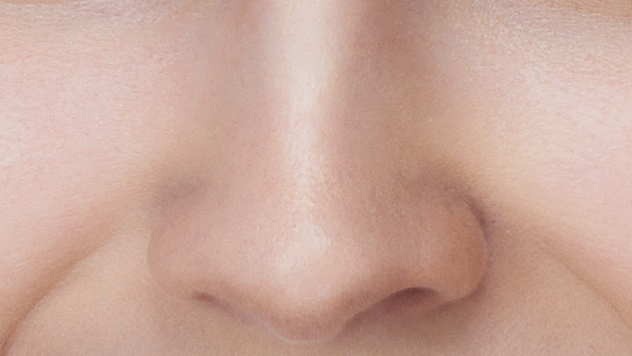
Scientists may be working hard at making organs that match the body's capabilities, but why stop there?When researchers at the University of Illinois set out to create a device that identifies chemicals by their scent, they didn't settle for the sensitivity of the human nose. Instead, they created an artificial nose that uses the smell of bacteria to identify and diagnose specific diseases.The result doesn't look much like a nose—it's a bottle filled with liquid nutrient that cultivates bacteria. But give the "nose" a blood sample and let it sniff for a few days, and the bottle's dots will change color to indicate what bacteria, if any, it identifies.
科学家们在赋予人体器官原本能力方面投入很深,但是为何要仅限于此呢?当伊利诺伊大学的研究员着手建立一种靠嗅觉来鉴别化学物质的装置时,他们并不满足于提高人类鼻子的灵敏度。相反,他们发展出一种假鼻子,依靠对细菌的气味来鉴别和诊断某些疾病。产品看起来并不太像一个鼻子,而是一个瓶子,装满了培养细菌的营养液体。但是给这个"鼻子"一个血液样本,让它嗅上一段时间,这个瓶子的斑点会改变颜色来表示它鉴别出的细菌种类。
3.Artificial Pancreas
3.人工胰腺
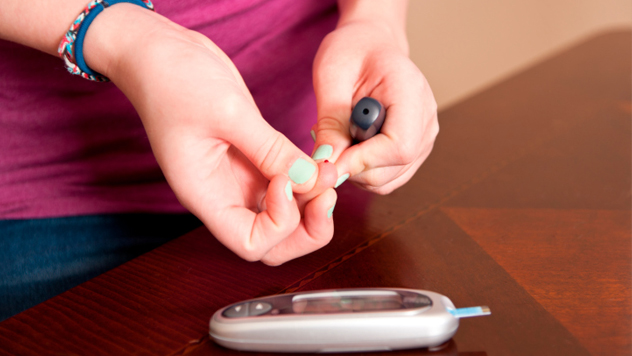
The pancreas produce insulin, and if yours don't, you need to inject yourself with the hormone manually. Diabetics are therefore trapped in a stressful routine of continually checking their blood sugar and then shooting insulin whenever the need arises.Artificial pancreas, however, knock insulin into your body automatically. The device looks much like a regular insulin pump, which slips you insulin continuously through your skin, but this one monitors your blood sugar at all times and adjusts itself accordingly. So even when the wearer sleeps, there's no danger of falling into shock if their sugar drops too low. Unlike several items on this list, artificial pancreas aren't still in some early development stage. The device very much exists and got FDA approval for sale this past September.
胰腺产生胰岛素,如果你的胰腺没有这样做,你需要人工注射胰岛素。因此,糖尿病患者必须进行的日常事例是检查他们的血糖,并且在必要时注射胰岛素。但是人造胰腺能够自动释放胰岛素到你的身体里。这个装置看起来像一个规律的胰岛素泵,它可以穿透皮肤连续地释放胰岛素进入身体。而且它一直监视血液里的血糖含量,并根据血糖含量调整胰岛素释放量。所以,即使携带该设备的人睡着了,也不会有血糖降至很低而晕倒的危险。不像这篇文章中其他的人造物品,人工胰腺并不处于前期研究阶段,这个装置确实存在,而且在今年9月份得到了FDA的销售许可
2.Artificial Eyes
2.人工眼睛
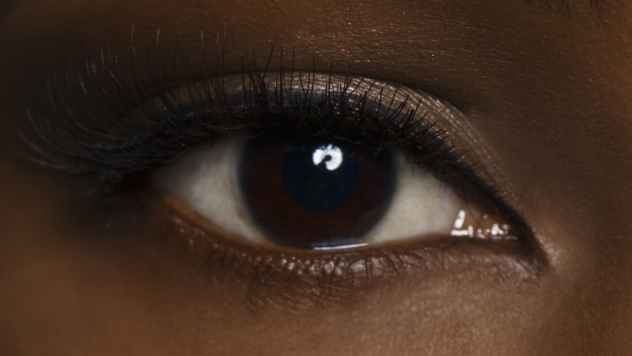
As we pointed out earlier, we've long been able to restore hearing to the deaf, but restoring sight to the blind is a much more complicated matter. When people lose their sight, their retinas no longer send signals from their photoreceptors to their brains. To make an artificial eye, we'd need to understand how the retina processes those signals, and that's a code scientists just haven't been able to crack.Not until recently anyway. But scientists at Weill Cornell Medical College have at last managed to—at least with mice and monkeys. This produced artificial retinas, whose chips convert images into electronic signals and whose tiny projectors convert electronic signals into light. These artificial eyes have indeed restored sight to blind mice. And the follow-up experiments on monkeys offer a lot of hope for eventual trials on humans because monkey and human retinas work similarly.
我们前面已经指出,我们已经能够让聋子听到声音,但是让盲人看见画面是更复杂的事情。当人们失去视力,他们的视网膜不再把光感受器的信号发送给大脑。为了制造人工眼睛,我们需要了解视网膜是如何取得这些信号,而这正是科学家尚未解决的关键之处。直到最近,Weill Cornell Medical College的科学家们至少在老鼠和猴子身上实现了这一点。这种人造视网膜,它的芯片可以将画面转换为电子信号,而它的微型投影机可以将电子信号转化为投影光线。这些人工眼睛,确实恢复了盲鼠的视力。猴子的视网膜工作原理和人类的非常相似,因此随后在猴子上进行的试验给了最终的人类试验以成功的希望。
1.Fingers That Store Digital Files
1.手指存储器
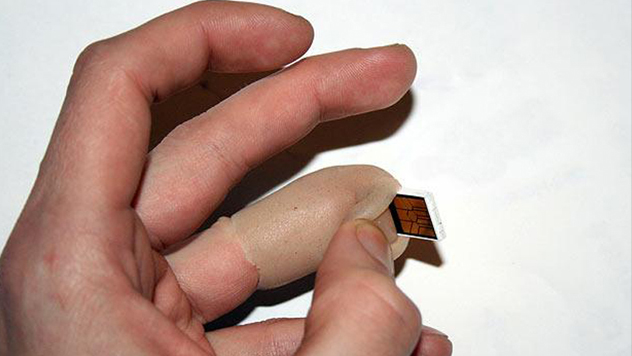
When Finnish programmer Jerry Jalava had a motorcycle accident in 2008, he faced a double tragedy. First, he lost his finger, an obvious problem for anyone who types for a living. Second, he had to deal with a medical team who thought they were comedians—learning of his profession, one surgeon joked that Jalava should go out and buy a "USB finger drive." Rather than strangling the doctor (difficult, due to his injury) Jalava took the corny line as inspiration. He decided to go ahead and actually build a prosthetic finger that contains two gigabytes of digital storage. He can now jack his finger into a computer just by peeling back the nail to expose the USB plug. He can also remove the entire finger at any time and hand it to a friend to use.The next step? Jalava plans to upgrade the finger with an RFID tag and add wireless support. He also wants to add more memory, which seems pointless to us. If he needs more storage, he has nine other fingers he can chop off and replace with flash drives.
当芬兰程序员Jerry Jalava 2008年遇到车祸,他面临双重悲剧。首先,他失去了他的手指,对于靠打字生存的人来说是个大问题。其次,他必须跟一个幽默感过剩的医疗小组打交道。了解了他的遭遇后,一位外科医生竟然提议Jalava应该出门去买个"USB手指驱动器"。但是Jalava并没有拒绝医生的建议(出于伤情的实际情况考虑,拒绝很困难),而是将这个建议作为自己的期待。他决定试一试,并且真的在植入的手指里放入两千兆字节的数字存储器。他现在只需将指甲剥掉,露出USB插头,即可将手指插入电脑连接。他也可以在任何时候拿掉整个手指,并且借给朋友使用。下一步呢?Jalava打算给手指带上RFID标签以进行升级,并且增加无线支持功能。他想扩充容量,方法自然是很无厘头的。如果他想有更多空间,他还有9个手指可以切掉换成移动存储器呢。
翻译:郑静 来源:前十网


